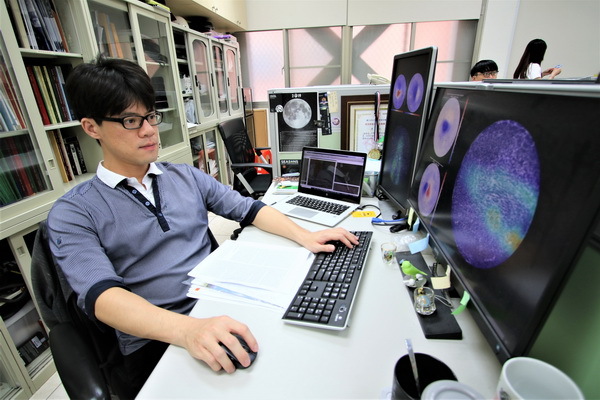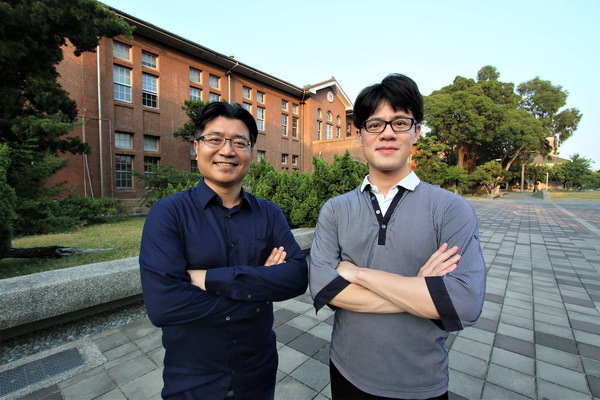With radio occultations of FORMOSAT-7, NCKU research team announces a significant discovery

The schematic diagram of Antarctic sudden stratospheric warming (SSW)
A rare Antarctic sudden stratospheric warming (SSW) caused unusual ionospheric oscillations over Taiwan and low latitudes.
A sudden stratospheric warming (SSW) usually occurs in the Arctic, but it rarely occurred in the Antarctic in September 2019. This is the third time in the history of meteorology within 50 years. In addition, the large and sharp increase in temperature also broke records. SSW made the ozone hole narrowed, increased the temperature of the Antarctic stratosphere by more than 50 ˚C within one week, and influenced the space environment in low latitudes. This research result has already been published in the top Journal, Geophysical Research Letter (GRL).
The research points out that the unusual oscillation in the ionosphere could contribute as large as ~25% of the electron density variability. The oscillation can influence GPS, long-range radio, and satellite communications unprecedentedly and will cause more impacts on GPS, self-driving cars and air navigation in the future.
SSW usually occurs in the Arctic which will cause the Arctic Oscillation and cold waves in low latitudes.
SSW is an extreme meteorological phenomenon in the polar stratosphere, which usually occurs in the Northern Hemisphere and will raise the temperature of the Arctic stratosphere by 20-50°C. Except for the change of temperature, meteorologists point out that within several weeks after SSW, negative Arctic Oscillation occurs and then influences the surface weather. It is the main reason why blizzards and cold winters hit mid and low latitudes. In 2016, when a strong cold air mass hit, partly caused by SSW, many places in Taiwan received a covering of snow.
The Antarctic SSW made the ozone hole narrowed and caused a unusual6-day ionospheric oscillation in September 2019.
Through observing global ionosphere by radio occultations of FORMOSAT-7, NCKU research team has detected the rare SSW over the Antarctic stratosphere. The extreme weather, occurred in the polar region, had caused ionospheric variability over Taiwan and other low latitudes. An SSW usually occurs in the Arctic, but it rarely occurred in the Antarctic in September 2019. This is the third time in the history of meteorology within 50 years. In addition, the large and sharp increase in temperature also broke records. SSW made the ozone hole narrowed, increased the temperature of the Antarctic stratosphere by more than 50 ˚C within one week, and caused a unusual 6-day ionospheric oscillation.

Jia-Ting Lin, the PhD student at Department of Earth Science, NCKU.
The Antarctic SSW occurred after the launch of FORMOSAT-7. NCKU research team published research achievement in top journal at the first time
Advised by Dr. Charles C.H. Lin, distinguished professor of Department of Earth Science, NCKU, Jia-Ting Lin, the PhD student at Department of Earth Science, NCKU, began to explore the relevant issues of SSW. Lin is interested in the issues of the extreme weather and always connects to the website abroad to view weather forecasting and track the path of typhoons. Lin’s dissertation will focus on space ionospheric variability. Lin firstly saw the aurora on the return flight after attending American Geophysical Union, which inspired him to consider whether the SSW will influence the ionosphere or not. With Prof. Lin’s professional academic advice and abundant research resources, Lin began to explore the issues of SSW, devoted to the research with Prof. Lin, and then published their research achievement in GRL at the first time. Lin and Prof. Lin’s achievement has raised Taiwan’s international visibility and keeps Taiwan’s international leadership on satellite missions.
The peak of the unusual 6-day ionospheric oscillation in low latitudes is at noon (12:00 p.m.) and 17:00 p.m. respectively
NCKU research team has detected that unusual ionospheric oscillations in the mid and low latitudes are closely related to Antarctic SSW. This research achievement has already been published in the top Journal, Geophysical Research Letter (GRL). The team proved that ionospheric oscillation reaches its peak at noon (12:00 p.m.) and 17:00 p.m. respectively while the previous research demonstrated the peak is at 15:00 p.m. Moreover, this unusual oscillation in the ionosphere could contribute as large as ~25% of the electron density variability. In fact, the unexcepted oscillation will cause more impacts on GPS, self-driving cars and air navigation in the future. For example, in September 2019, the performance of GPS positioning in Taiwan was influenced by the SSW and caused a larger error than before.
Though researchers in other countries also detected the unusual oscillation by satellites of European Space Agency (ESA). However, the limited spatial and temporal observations of ESA’s satellite are due to the satellite orbit characteristic and cause an incomplete observation of oscillation. The definite advantage of FORMOSAT-7 is that it can observe ionospheres all over the world, which helps NCKU research team’s SSW research more complete and be the first-rate.
In recent years, Europe and North America suffer frequent blizzard while the polar regions’ high temperature reaches a new record. SSW weakens the stratospheric polar vortex and leads to weaker jet streams. Therefore, cold air of the polar region will plunge southward into mid and low latitudes while the warm air will penetrate northward to the polar region. Therefore, the warm winter will inhibit sea ice growth, which is a serious climate issue that scientists worry about. FORMOSAT-7 enhances the accuracy and precision of space observations, and of surface weathers’ influence on GPS and communication. Most important of all, NCKU will play an essential role in the research of atmosphere-ionosphere coupling.

Jia-Ting Lin, the PhD student at Department of Earth Science, NCKU (on the right) and Dr. Charles C.H. Lin, distinguished professor of Department of Earth Science, NCKU (on the right).
GRL paper Link:https://agupubs.onlinelibrary.wiley.com/doi/10.1029/2020GL090345